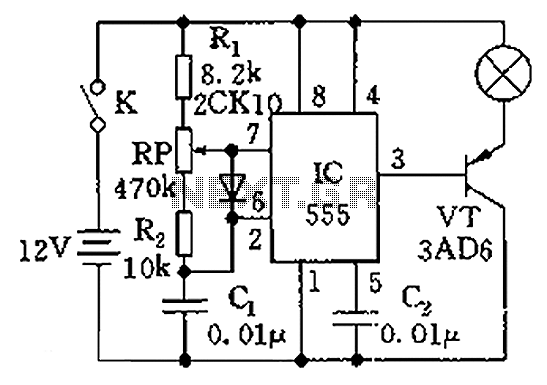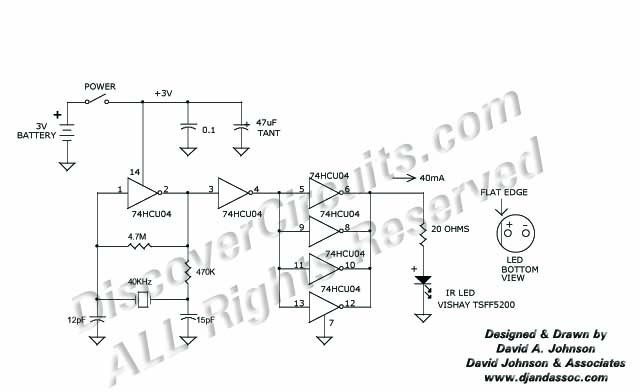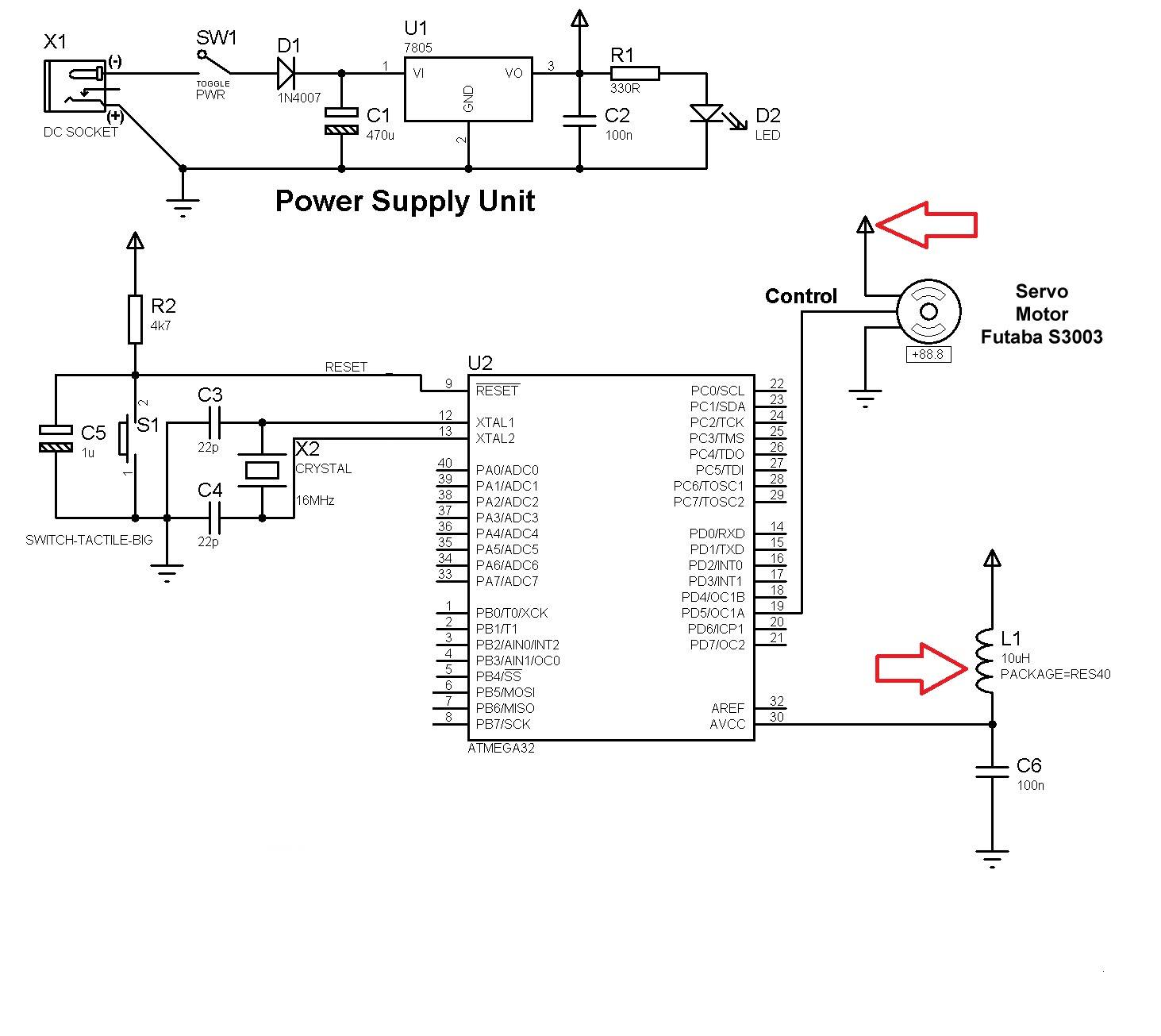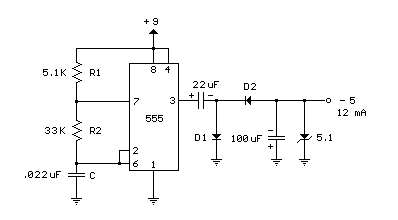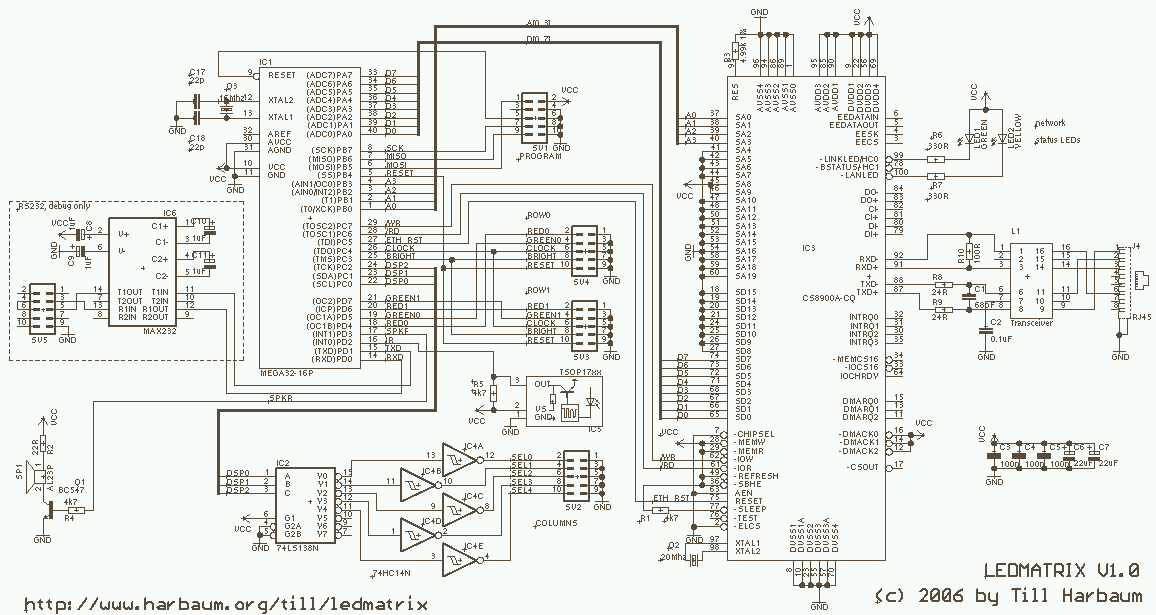
LED Chaser by IC 4017 + IC 555
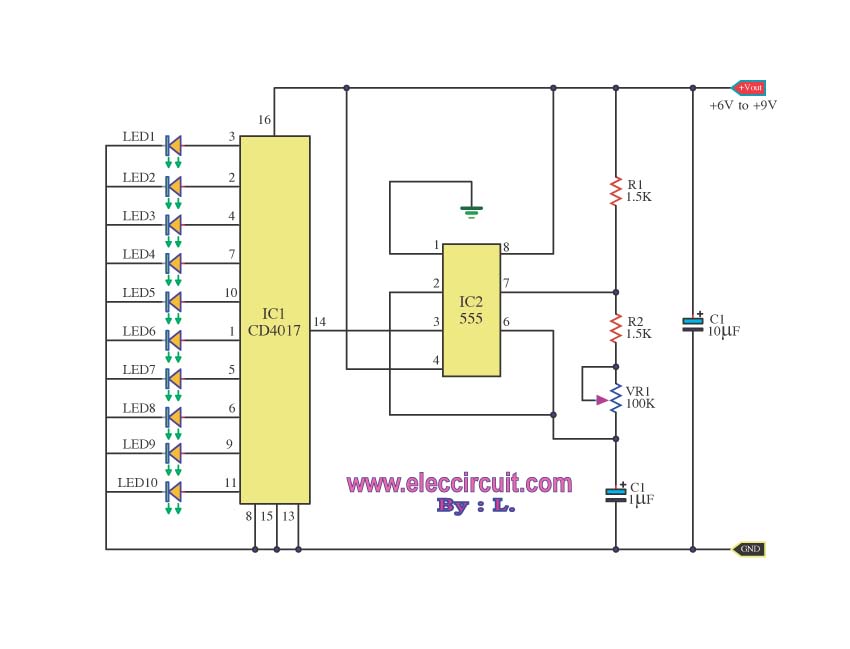
For constructing a 10 LED Chaser circuit, it is recommended to start with this design. It utilizes the widely used and cost-effective IC-4017 decade counter.
The 10 LED Chaser circuit is an engaging project that demonstrates the sequential lighting of LEDs, creating a visual effect akin to a moving light. The core component of this circuit is the CD4017 decade counter, which is a popular choice due to its simplicity and affordability. The CD4017 can drive up to ten output LEDs, making it ideal for this application.
The circuit typically requires a few additional components, including a clock signal generator, resistors, and capacitors. The clock generator can be implemented using a 555 timer IC configured in astable mode, providing a continuous pulse that drives the CD4017. The output of the CD4017 is connected to a series of LEDs, each of which is connected to one of the decade counter's outputs.
A resistor is placed in series with each LED to limit the current and prevent damage to the LEDs. The LEDs will light up in sequence, following the clock pulses, creating a chaser effect as they turn on and off in a cycle.
Power supply considerations are also essential; the circuit typically operates within a voltage range of 3V to 15V, making it versatile for various applications. Proper decoupling capacitors should be used near the IC to stabilize the power supply and ensure reliable operation.
Overall, the 10 LED Chaser circuit using the CD4017 is an excellent project for beginners and enthusiasts, providing a practical introduction to digital electronics and sequential logic.If you want to build a 10 LED Chaser circuit we suggest this circuit first. It uses popular IC is a simple and affordable IC-4017_decade counter and.. 🔗 External reference
The 10 LED Chaser circuit is an engaging project that demonstrates the sequential lighting of LEDs, creating a visual effect akin to a moving light. The core component of this circuit is the CD4017 decade counter, which is a popular choice due to its simplicity and affordability. The CD4017 can drive up to ten output LEDs, making it ideal for this application.
The circuit typically requires a few additional components, including a clock signal generator, resistors, and capacitors. The clock generator can be implemented using a 555 timer IC configured in astable mode, providing a continuous pulse that drives the CD4017. The output of the CD4017 is connected to a series of LEDs, each of which is connected to one of the decade counter's outputs.
A resistor is placed in series with each LED to limit the current and prevent damage to the LEDs. The LEDs will light up in sequence, following the clock pulses, creating a chaser effect as they turn on and off in a cycle.
Power supply considerations are also essential; the circuit typically operates within a voltage range of 3V to 15V, making it versatile for various applications. Proper decoupling capacitors should be used near the IC to stabilize the power supply and ensure reliable operation.
Overall, the 10 LED Chaser circuit using the CD4017 is an excellent project for beginners and enthusiasts, providing a practical introduction to digital electronics and sequential logic.If you want to build a 10 LED Chaser circuit we suggest this circuit first. It uses popular IC is a simple and affordable IC-4017_decade counter and.. 🔗 External reference
